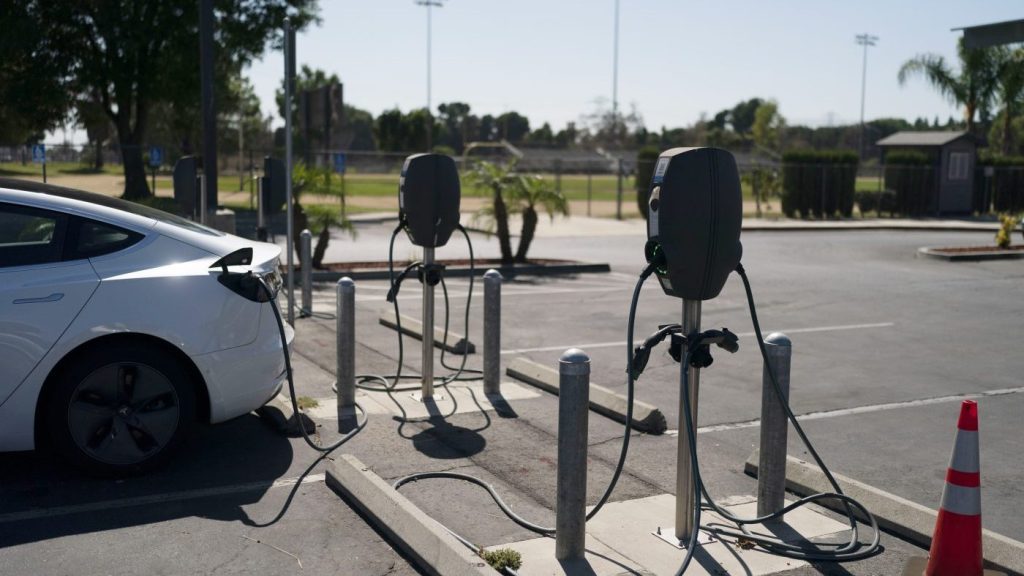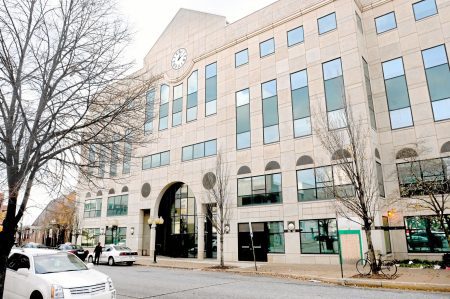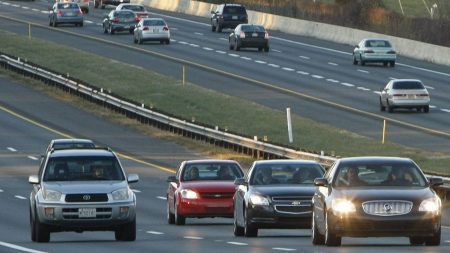The introduction of electric vehicles in the Bay Area has resulted in a slight but consistent reduction in carbon dioxide emissions in the region, as reported by a recent study.
By utilizing a network for monitoring air quality that was established in the region over ten years ago, researchers observed a 2.6 percent yearly decline in vehicle emissions over five years. They published their findings in the journal Environmental Science & Technology on Wednesday. The researchers gathered their data through an air pollution monitoring system set up in 2012 by Ronald Cohen, a chemistry professor at the University of California, Berkeley, who is also the senior author of the study..
The Berkeley Environmental Air Quality and CO2 Network has expanded to over 80 stations, including seven in San Francisco and on the East Bay, spanning from Sonoma County through Vallejo and San Leandro, Calif.
Reviewing data from 2018 to 2022, the researchers discovered that 57 of the 80 sensors recorded a modest but meaningful decrease in carbon dioxide emissions, which amounts to approximately 1.8 percent annually.BEACO2NThe decrease in emissions translated to a 2.6 percent yearly decline in vehicle emissions rates when considering California's data for electric vehicle adoption, according to the study.
Lead author Naomi Asimow, a graduate student in the department of Darth and planetary science, stated,“That’s 2.6 percent less CO2 per mile driven each year,” in a statement.
While this reduction is generally positive, it falls short of the annual decrease required for the Bay Area and California to meet their long-term climate objectives.
“The state of California has set this goal for net zero emissions by 2045, with 85 percent of the reduction coming from actual emission cuts rather than direct CO2 removal from the atmosphere,” Asimow said. Despite being a step in the right direction, the decrease is much smaller than what the Bay Area and the rest of California need to achieve in order to meet their long-term climate goals..
California aims to achieve net zero emissions by 2045, with 85 percent of the reduction coming from actual emission cuts rather than direct CO2 removal from the atmosphere, according to Asimow.
“What we report is around half as fast as we need to go to get to net zero emissions by 2045,” she added.
According to Asimow, the annual rate of overall emissions decline needs to be 3.7 percent instead of 1.8 percent.
Although estimates of carbon dioxide releases typically rely on known sources of carbon, the authors stated that this approach did not account for the decline in emissions that they observed.
Instead, they combined direct carbon dioxide measurements from the network sensors with meteorological data to calculate ground-level emissions.
Cohen advocated for the installation of such sensors in other cities, emphasizing that they are affordable—an amounting to less than $10,000 per sensor—allowing major metropolitan areas to deploy the network and gain a clearer understanding of their air pollution and its sources.
Cohen stated, “This is cost-effective and translatable and easily accessible to the public in a way that nothing else is.
The study revealed that the adoption of electric vehicles in the Bay Area has led to a gradual reduction in carbon dioxide emissions. Researchers found a 2.6 percent yearly drop in vehicle emissions rates by analyzing data from an air quality monitoring network set up in the area over a decade ago.









